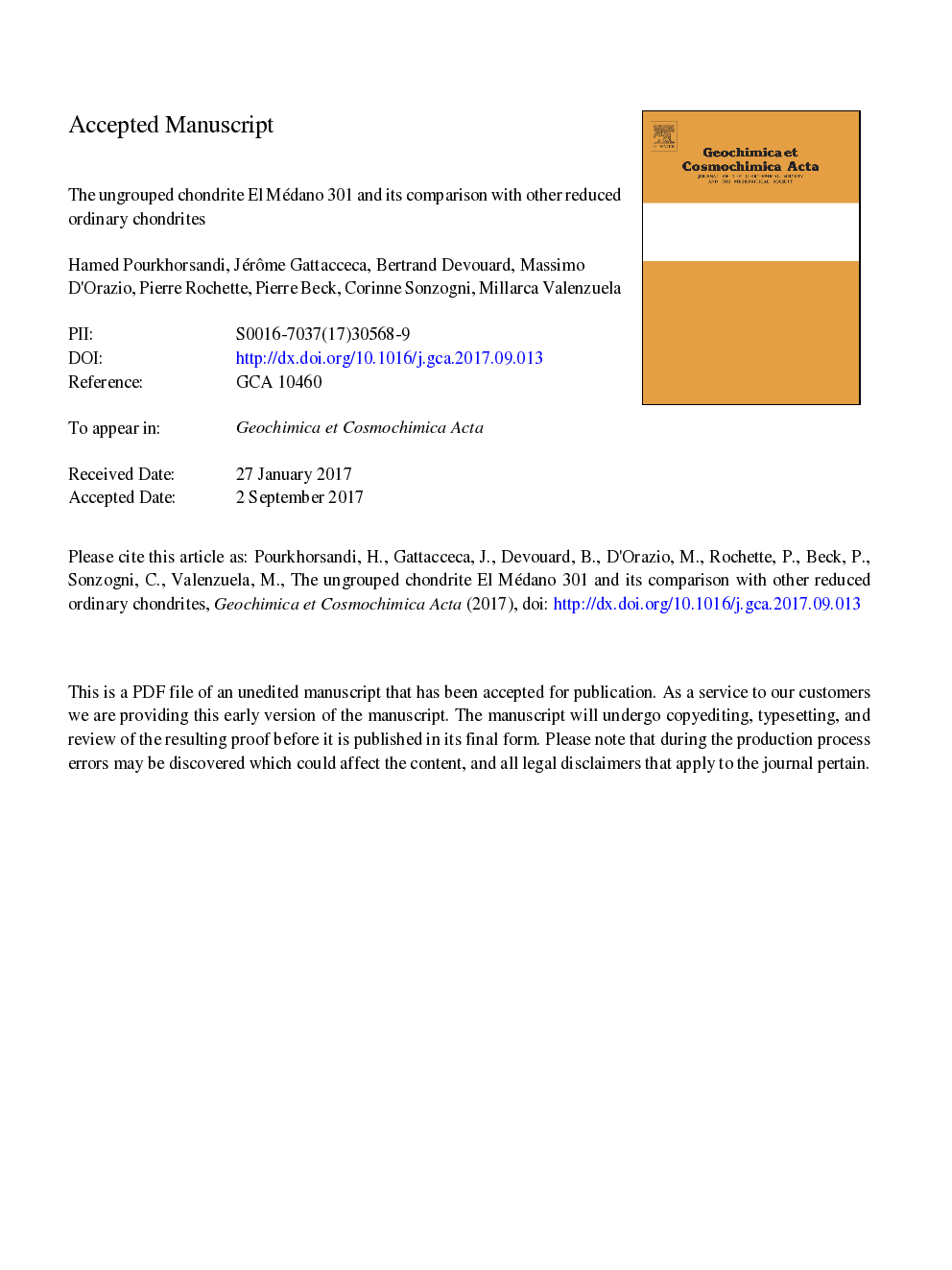| Article ID | Journal | Published Year | Pages | File Type |
|---|---|---|---|---|
| 5783301 | Geochimica et Cosmochimica Acta | 2017 | 69 Pages |
Abstract
Our observations suggest the formation of EM 301 in a nebular region compositionally similar to OCs but with a different redox state, with oxygen fugacity (ÆO2) in this region lower than that of OCs and higher than that of enstatite chondrites condensation region. A second, possibly nebular, phase of reduction by the production of reducing gas phases (e.g., C-rich) could be responsible for the subsequent reduction of the primary material and the occurrence of reverse zoning in the low-Ca pyroxene and lower average Fa/Fs ratio. Based on the IR spectra of EM 301 we suggest the possibility that the parent body of this chondrite was a V-type asteroid.
Related Topics
Physical Sciences and Engineering
Earth and Planetary Sciences
Geochemistry and Petrology
Authors
Hamed Pourkhorsandi, Jérôme Gattacceca, Bertrand Devouard, Massimo D'Orazio, Pierre Rochette, Pierre Beck, Corinne Sonzogni, Millarca Valenzuela,
